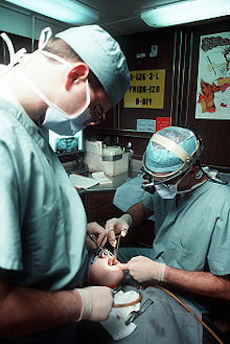
“Morning in the Woods,” by Currier & Ives.
The Medicus Firm, a healthcare staffing company, reports that primary-care physicians might want to consider looking in a rural area for a new job. Not only do many rural areas have significant need for PCPs, but they may also offer the biggest compensation packages.
The Medicus Firm compiled data based on its placements of PCPs and physician assistants made with more than 250 hospitals, health systems and medical groups in 2015.
Here are six takeaways on PCP and PA compensation based on its findings, as summarized by Becker’s Hospital Review:
1. “Internal-medicine physicians bring home higher salaries on average than family practice physicians. Based on data provided by The Medicus Firm, the average family practice physician salary was $210,192 in 2015. Comparatively, the average internal medicine salary was $238,975 in 2015 or about 14 percent more than family practice.”
2. “By average placement salary, rural settings are the most lucrative for both internal medicine physicians and family practice physicians. The average placement salary for family practitioners in rural areas was $227,261 — 16 percent more than the average urban salary and nearly 10 percent more than the average salary in a mid-sized community. For internal medicine physicians the average rural placement salary of $256,667 is 13 percent greater than its urban equivalent and 10 percent greater than the mid-sized community average.”
3. “Average signing bonuses across both family practice and internal medicine seem to follow the trend of greater awards in rural areas. The average primary care signing bonus is $19,714, according to the The Medicus Firm. However, broken down by family practice and internal medicine physicians,the signing bonus data shows no clear trend.”
4. “Average total compensation — including both salary and signing bonus — got larger as community size got smaller. Despite the range of signing bonuses, total compensation, like average salary trends, shows a negative correlation between total compensation and population size.”
5. “{B}oth average salary and average total compensation was highest in the Central U.S./Upper Midwest and the South/Southwest.”
6. “PAs earned an average salary of $112,680 and an average signing bonus of $6,250 in 2015. About one-third were paid relocation bonuses ranging from $5,000 to $15,000, averaging about $8,751. PAs were the fourth most-placed clinician in 2015, according to The Medicus Firm. Salary and compensation data by community size and region was not available.”








